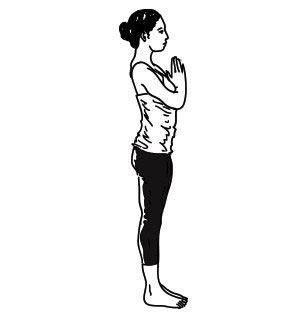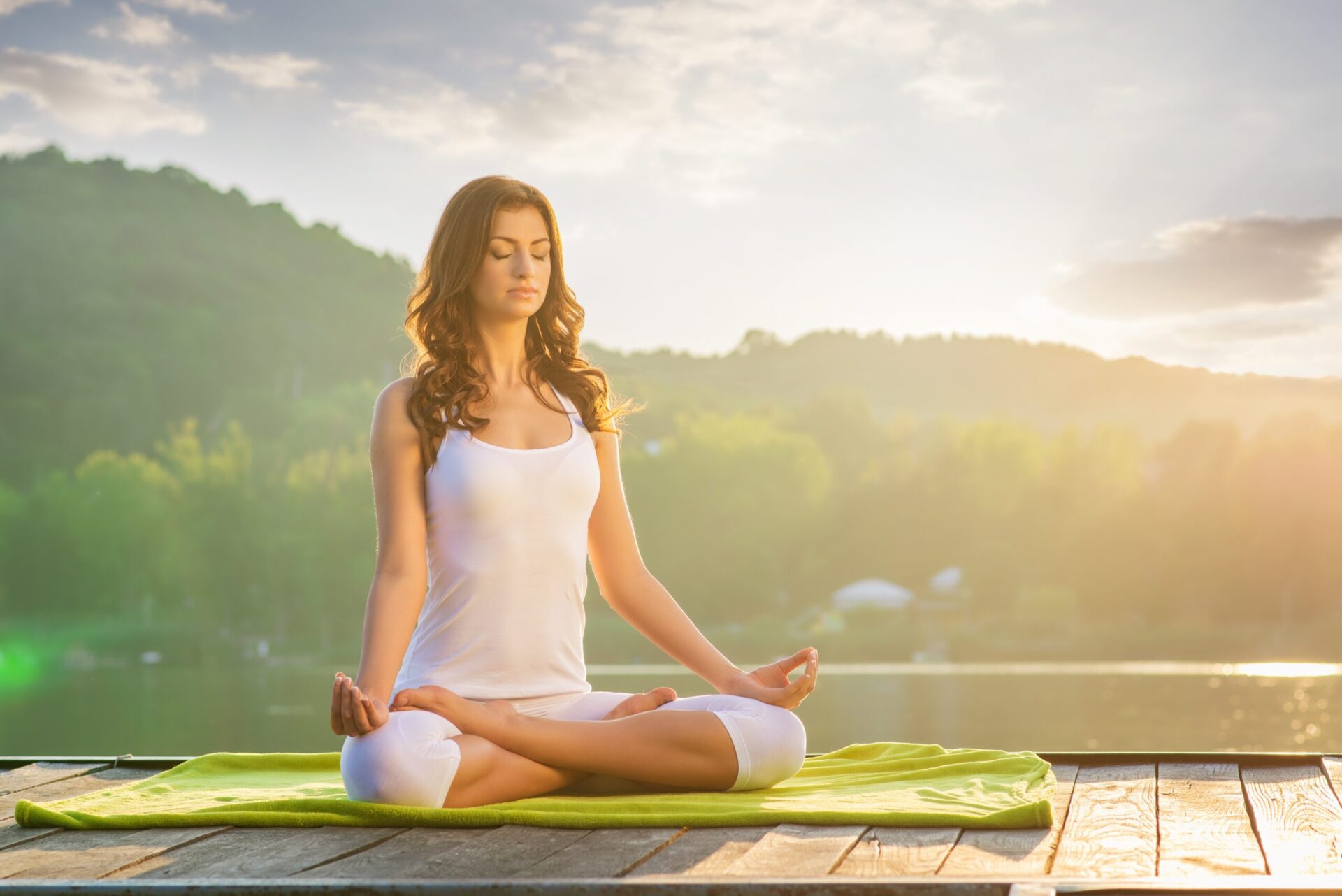Surya Namaskar is a sequence of 12 highly benefactor asanas performed to regulate cardiovascular health. The series of 12 asanas Pranamasana, Hastauttanasana, Hastapadasana, Ashwa Sanchalanasana, Dandasana, Ashtanga Namaskara, Bhujangasana, Adho Mukha Svanasana, Ashwa Sanchalanasana, Hastapadasana, Hastauttanasana and Tadasana are aligned in such a way to formulate a pattern and ease out the subsequent asanas.












It is said that the benefits of Surya Namaskar exalt the results, if performed in the morning without having any meal. It is advisable to perform at least 2 sets of Surya Namaskar with at least 2-minute break in between the subsequent sets. Furthermore, it is best to stick with ‘one version’ despite others floating around. Practising a single version regularly shapes the mechanism and provide better results in comparison to jumping from one to another. Surya Namaskar also helps the individual to embark the day with brimming positivity and maintain it throughout the day. But, all these go to waste if you cannot perform Surya Namskar correctly. So, What is the correct way to perform Surya Namaskar? How to perform Surya Namaskar with efficiency to efficacy.
How to Perform The Surya Namaskar – Asanas Correctly
Pranamasna
Pranamasna is as simple as its etymology that is, ‘pranam’ and ‘asana’ colloquially to perform pranama or to bow is asana. But here’s how you can perform Pranamasna correctly.
Steps

- Stand on the front edge of the mat
- Balance is the key, balance the weight of your body equally on both legs
- Expand your chest. Relax the tension in your shoulders
- As you breathe in, raise your hand to fold it up in Namskara position
- As you breathe out, hold the Namaskara position
Hastauttanasana
Pranamasna is subsequently followed by Hastauttanasana inflow. Hastauttanasana is comprised of ‘Hasta’ ‘uttan’ and ‘asana’ that is, Hand Up pose. it can be performed correctly by following these
Steps

- Breathe In – In the process
- Manoeuvre your arms up and back
- Keep your biceps close to the ear
- Push your pelvis forward as much possible
- And try to reach up to your fingers instead of bending
Hastapadasana
The long stretch in your body opens up the muscles and tendons to maximize their potential. However, Hastauttanasana is half-stretch and is incomplete without its complementary partner Hastapadasana. Similar to Hastauttanasana, Hastapadasana means to bring Hand and Feet together. The pose signifies the same.
Steps

- Breathe Out – In the process
- Manoeuvre your from back up to touch the ground beside your toes
- As you bend forward, keep your spine erect
- Exhales completely
- You may bend your knees if necessary, however, after completion of the pose make a tender effort to straighten them
- It is advised not to move the hand position until the sequence is complete.
Ashwa Sanchalanasana
Hastapadasana marks the end of the stretching process of our body and prepares the body and mind for subsequent complex asanas. These complex asanas put weight on the muscles and tendons.
Hastapadasana is followed by Ashwa Sanchalanasana, which is made out of ‘Ashwa’ ‘Sanchalan’ and ‘asana’ means, equine, riding and pose or equestrian pose.
Steps

- Breathe In – In the process
- Manoeuvre your left leg, push it back as far as possible
- Ensure that the left leg is between the palms
- Bring your right knee perpendicular to the chin
- Look up in the air
- Exhale
Dandasana
Ashwa Sanchalanasana or equestrian pose is followed by Dandasana or the stick pose. This asana is fused to mimic the pose of the stick.
Steps

- Breathe In – In the process
- Manoeuvre your perpendicular right knee leg
- Push the right leg equitable to the left leg
- Ensure that now arms are as perpendicular as possible
- Bring your whole body in a straight line
- Exhale
Ashtanga Namaskara
As the name Ashtanga Namaskara suggests ‘Asht’ means eight, ‘Anga’ means body and ‘Namaskara’ means to bow.
Both toes, both knees, both palms, bosoms and chin must touch the ground in order to perform this asana. This Means, only these eight body parts need to bow down in Namaskara rest needed to be as it is. While this may seem a complex asana here is the steps to perform it fluidly
Steps

- Breathe as per requirement – In the process
- Manoeuvre your knees gently to touch the floor
- Exhale
- Inhale
- Push the hips slightly back to the previous position while keeping the knee intact with the ground.
- Rest your chin and try to
- Raise your posterior
Bhujangasana
Ashtanga Namaskara is followed by Snake pose or Bhujangasana. Bhujang means snake in Hindi. This asana embraces the wind and improves the blood circulation in our body.
Steps

- Breathe In
- Manoeuvre your hip gently to touch the floor
- Inhale and push your navel down to earth
- Raise your bosom up
- Exhale and push your bosom forward
- Look in the sky
- You may rest your palms on the floor
Adho Mukha Svanasana
Bhujangasana or snake pose is subsequently followed by the last prime asana in the sequence that is, Adho Mukha Svanasana. Adho Mukha Svanasanais is also known as downward dog pose. In implementing posture you have to create an inverted ‘V’ by lifting your hips.
Steps

- Breathe Out – In the process
- Manoeuvre your hip and tailbone gently to raise up
- Ensure to keep heels on the ground
- Try to stretch deeper as possible
- Do not push the stretch
Ashwa Sanchalanasana
After the complex set of asanas, Surya Namaskar takes a formal note to return the body at the previous stage. However, the actual process begins from Hastapadasana. The repetition of Ashwa Sanchalanasana is for the right side of the body that was jilted and act as a transition to the stretching process.
Steps

- Breathe In – In the process
- Manoeuvre your right leg and push it back as far as possible
- Manoeuvre your bosom forward
- Ensure that the right leg is between the palms
- Bring your left knee perpendicular to the chin
- Look up in the air and
- Exhale
Hastapadasana
Hastapadasana marks the beginning of the stretching process in the second half. The process is exactly reversal to the first half.
Steps

- Breathe Out – In the process
- Manoeuvre your right leg and bring it back in the standing position
- Keep your palms on the floor and bend knee if necessary
- As you bend forward, Keep your spine erect
- Exhales completely
- After completion of the pose make a tender effort to straighten your knees
Hastauttanasana
While in the first half, we go from Hastauttanasana to Hastapadasana. In the second half, we go from Hastapadasana to Hastauttanasana.
Steps

- Breathe In
- Manoeuvre your spine back and hands up
- Keep your biceps close to the ear exactly as in the first half
- Push your pelvis forward as much possible
- And try to stretch up rather than back
Tadasana
Tadasana means at ease. Basically, Tadasana leaves your body as it was in the beginning. It is a common standing pose that is purposely fused with Surya Namaskar to restore your body to normal.
Steps

- Breathe out – In the process
- Manoeuvre your arms back to normal
- Straighten the body and
- Observe the Sensations
Yoga is an art and part of Indian culture. To practice ‘yog’ is simple and attainable. one does not need any special requirements to perform yoga, neither does it require costly gym items to execute them. In-fact, If unfortunately enough, one does lack yoga mat, It can be performed directly on the ground without it. Yoga has proven to improve the cardiovascular process of the human body and provide them with placidity. Yoga account for the improved overall health of the individual that is, the Mind and the Body.









